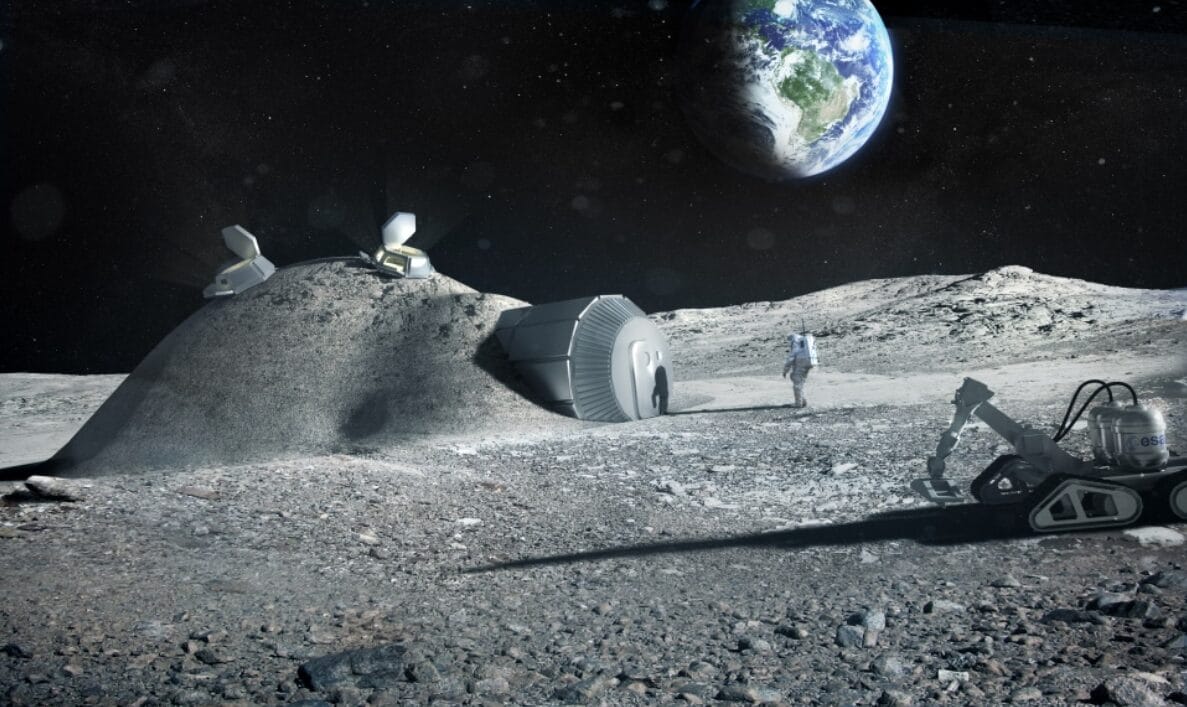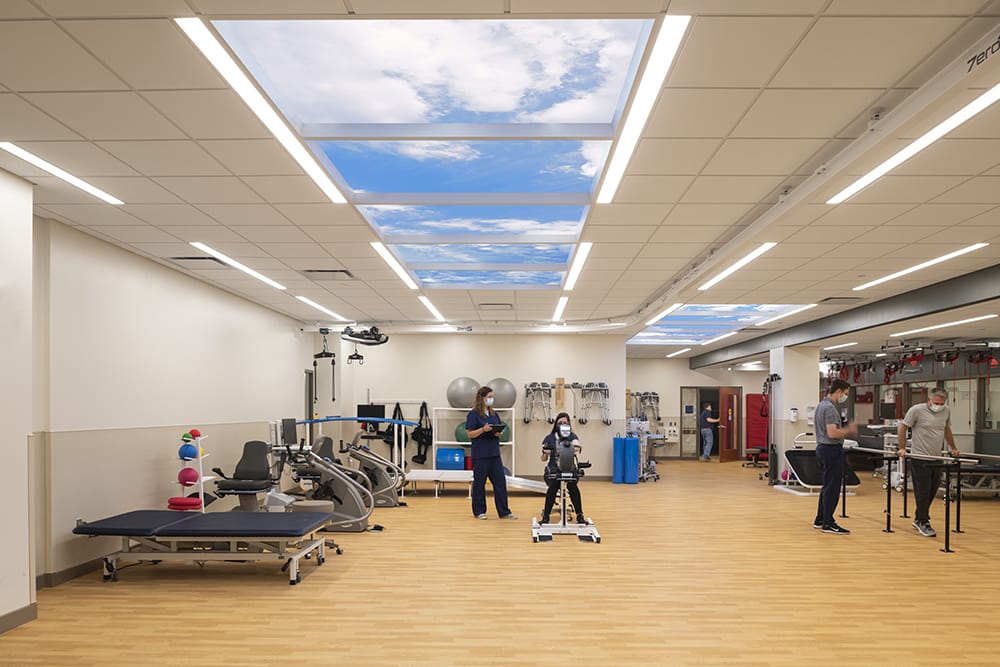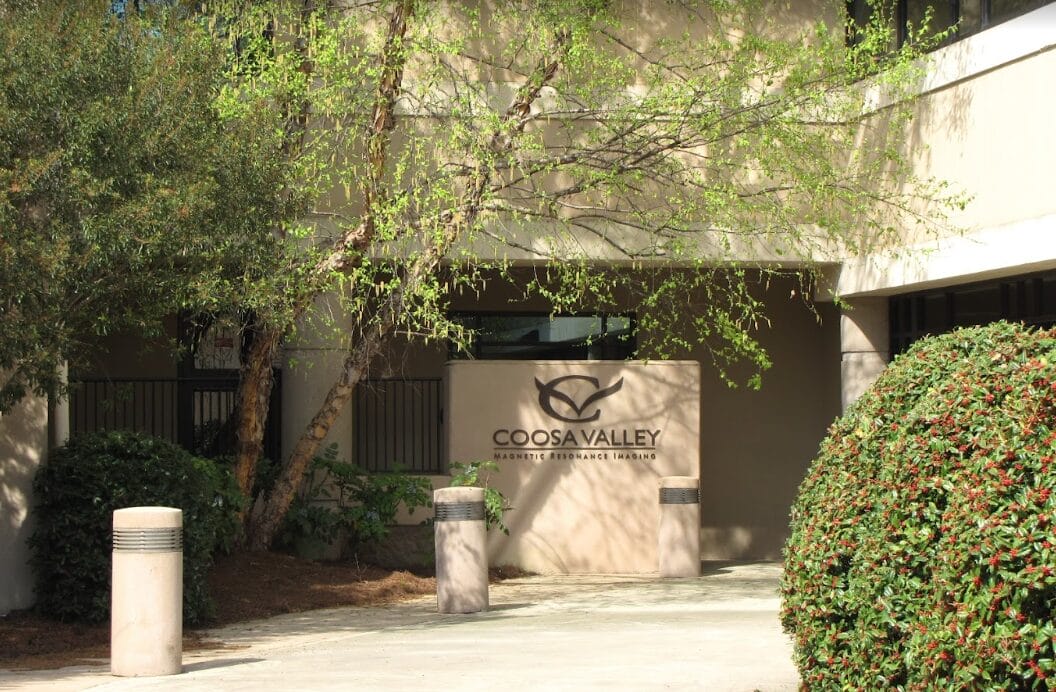On October 27th, Sky Factory unveiled its new dynamic daylight illumination system (IRIS) for Luminous SkyCeilings. The IRIS-capable virtual skylights were incorporated into two prototype shelters for extraterrestrial human habitation designed by Foster + Partners. The presentation of the modular habitats are part of a NASA contract awarded to Branch Technology, a commercial facades construction company, to investigate the potential of their proprietary 3D printing process for extraterrestrial shelters fabrication.
The hexagonal trim perimeter for the SkyCeilings, as well as the entire structure of the lunar modules, was created using Cellular Fabrication (C-Fab), Branch Technology’s unique approach to 3D printing. This innovative method relies on freeform 3D printing to generate a lightweight lattice structure whose unique geometry consumes 20X less material than fused deposition modeling (FDM), the standard 3D printing method.
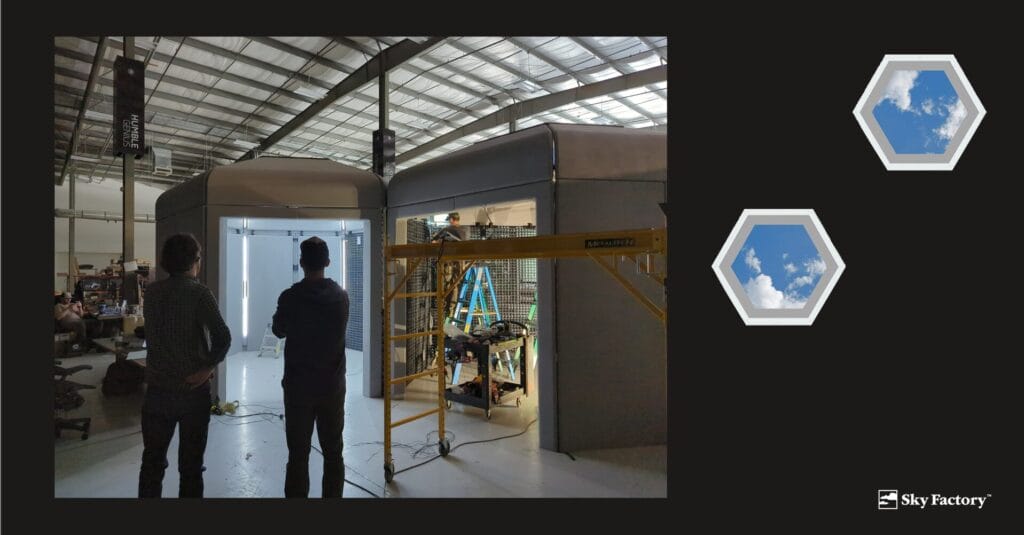
While Foster + Partners and Branch Technology focused on the structural demands for the two modules, Sky Factory was brought into the project to add a dynamic LED illumination system that could achieve three objectives:
1) Create a vivid, natural illusion of spatial depth
2) Incorporate a virtual skylight that supported circadian rhythms, and
3) Restore and recharge focused attention, a key ultradian rhythm involved in mental acuity and cognitive performance that also responds to the natural variability inherent in daylight.
According to environmental psychology studies, the human physiology operates best when the built environment offers both prospect (a commanding vista of the surroundings) and refuge (a place of safety and comfort). However, the prospect of deep space does not yield the restorative impact that a perceived visual connection to Earth’s deep blue sky provides.
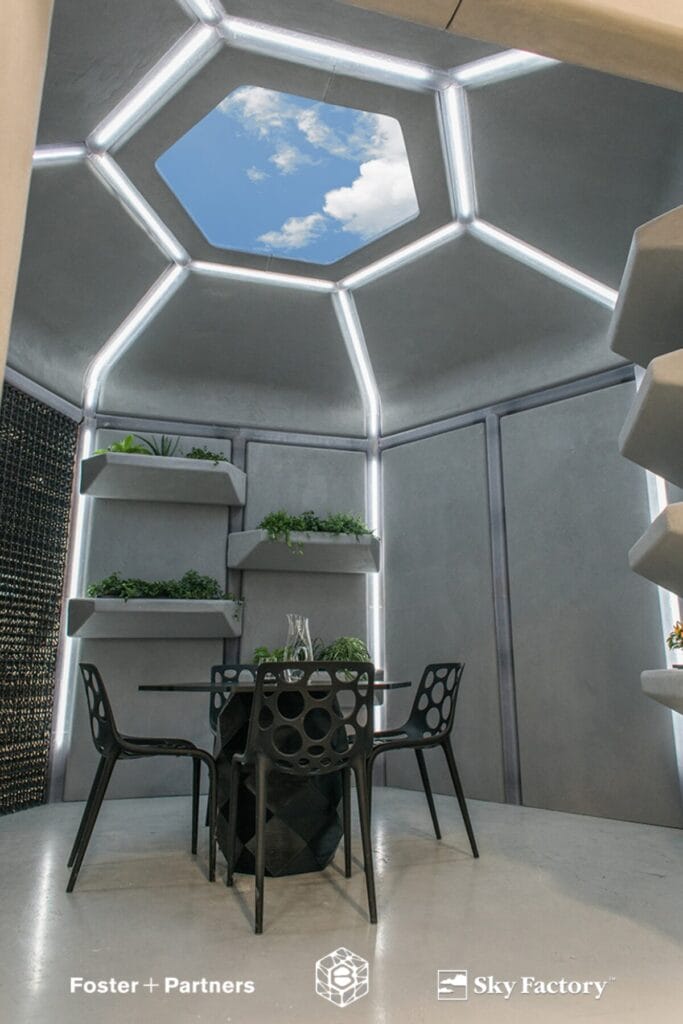
Sky Factory’s research-verified illusions are the only product of its kind with peer-reviewed research documenting their therapeutic attributes (Health Environments Research & Design Journal, 2014, 2015), as well as bestowed with a Certificate of Research Excellence (2017) from the Environmental Design Research Association.
“The IRIS-enhanced Luminous SkyCeilings feature a daylight-quality dynamic playback system equipped with two algorithms—PRiSM and DiAL—designed to support our circadian rhythm, as well as the ultradian rhythm governing focused attention, essential in order to maintain both mental clarity and focus in enclosed interiors,” says Skye Witherspoon, CEO and the co-inventor of IRIS (U.S. patent pending), along with company founder, Bill Witherspoon.
A fundamental consideration in deep space exploration is the design of human habitats and their effects on the physiology and cognitive performance. Future astronauts will need to adapt to a life devoid of the spatial relationships that our mind and body require to maintain homeostasis and thrive. Therefore, the compact space within these shelters is thought to benefit from windows that enhance occupant wellness through biophilic spatial polarity (prospect & refuge).
The Luminous SkyCeilings provide this restorative feature by generating a credible illusion of perceived proximity to the sky’s healing canopy. Coupled with IRIS, the skylight’s daylight playback, algorithms modulate the circadian arc that helps entrain the occupants’ Basic Rest-Activity Cycle (BRAC), as well as maintain refreshed and sharp attention throughout their long extraterrestrial missions.
NASA sought to explore Branch Technology’s proprietary approach to 3D printing after the company entered the space agency’s 3D Printed Habitat Competition, which was part of NASA’s Centennial Challenges Program. The competition sought to foster the development of technologies to manufacture off-world habitats using indigenous materials with, or without, recyclable materials.
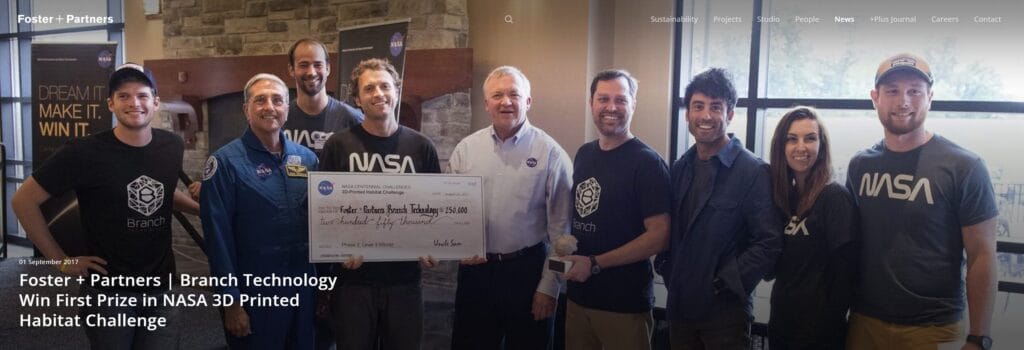
In 2017, Foster + Partners teamed up with Branch Technology and earned 1st prize (out of 77 registered teams) during Phase II of the 3D Printed Habitat Challenge. The Foster + Partners team sought out Sky Factory to incorporate Luminous SkyCeilings in their lunar module and provide a restorative feature for the structure’s occupants.
“We wanted to provide a sense of depth and connection with natural references within the habitat, which is crucial to make any extraterrestrial habitat a home. The SkyCeiling prototype shows how biophilic design applications can enhance isolated spaces in extreme conditions such as the lunar shelter,” says Salvador Navarro, Associate at Foster + Partners.
While the virtual skylights feature Aperture’s unique mechanical wall design, they were custom designed to mirror the hexagonal symmetry of the lunar modules.
“We’re very excited to participate in this phase of the project,” says Skye Witherspoon, Sky Factory CEO. “The collaboration with Foster + Partners and Branch Technology’s team was fluid, and the project was both fun and demanding. We just kept adapting to the needs of the project, including a re-design of Aperture’s knife’s-edge trim to a bullnose shape that could be 3D printed.” adds Witherspoon.
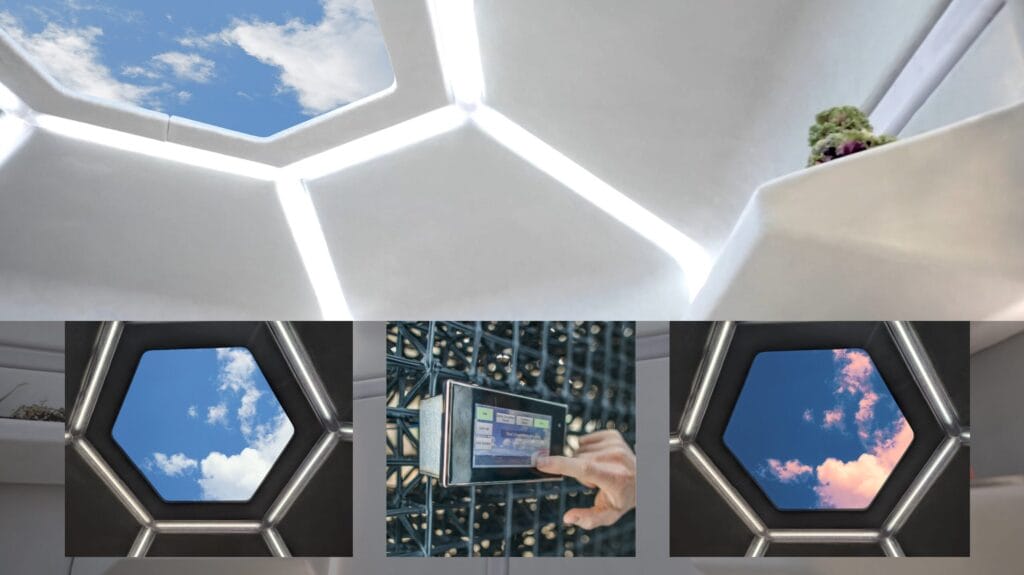
“At every turn, we met the technical challenges and I think the IRIS-capable Luminous SkyCeilings embody the ways that biophilic design can attune extraterrestrial living conditions to our biology,” adds Skye. The demo presentation at Branch Technology’s Chattanooga, TN, facility for NASA executives was part of a collaboration between Foster + Partners, a global leader in architectural design; Branch Technology, a U.S. construction company that specializes in 3D printed commercial building facades; and Stanford University.
NASA’s Centennial Challenge program envisions the future of space exploration where autonomous machines are deployed to the moon, Mars, and beyond to help construct extraterrestrial shelters for human habitation with maximum deployable efficiency and effective local resource allocation.
The challenge, which began in 2015, features three phases and multiple levels, where multidisciplinary, high-tech teams compete in distinct fields, including design, materials, and fabrication. The space agency’s goal for the competition is to call upon citizen inventors, as well as private, public, and academic partnerships to push technology forward in the service of space exploration.

